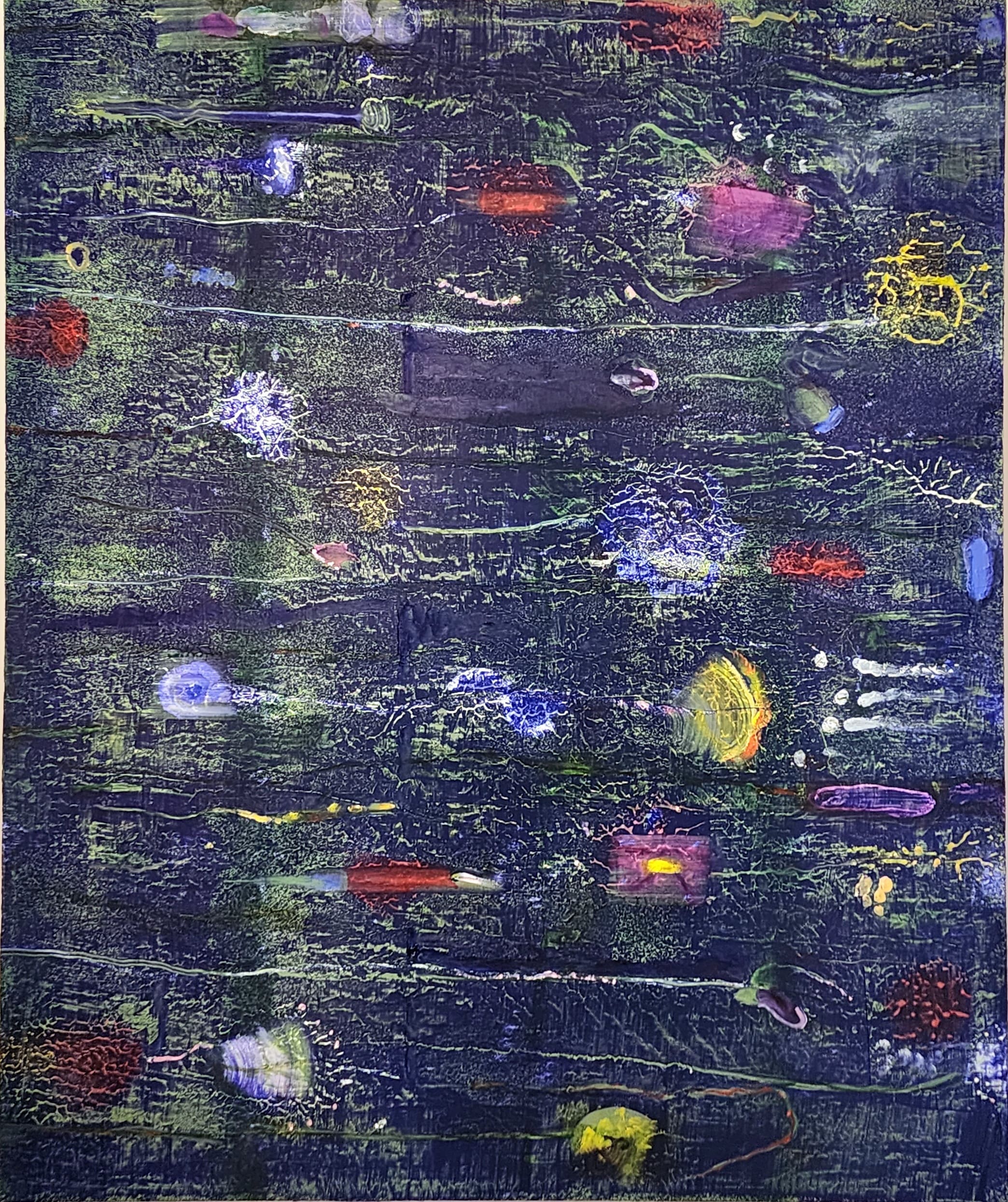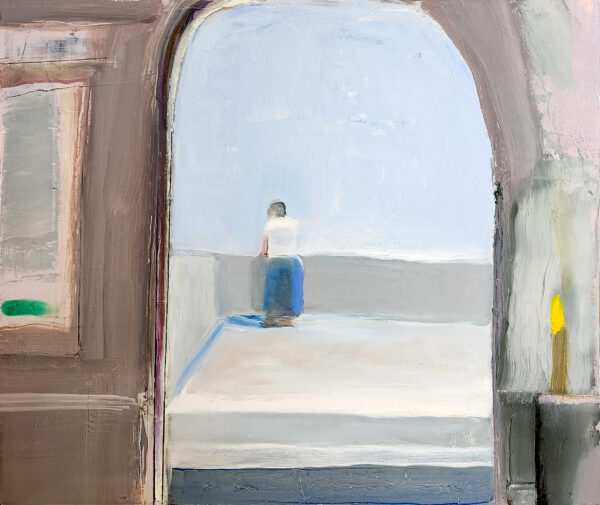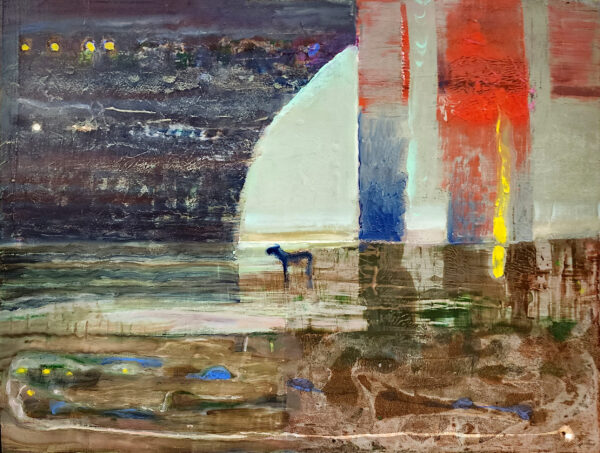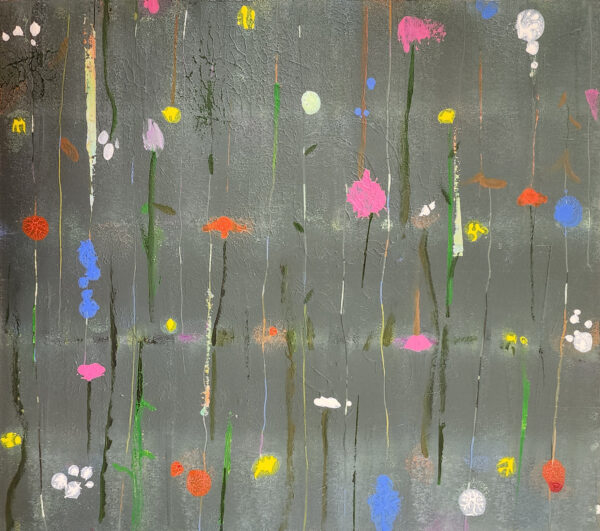Obras
Alan Siegel
My work has been preoccupied with dark ruminations. Recently it has taken a turn from darkness to light. Perhaps it is because of the sunshine of San Miguel and the warmth of the Mexican culture.
– Alan Siegel
Siegel is known for his chairs, which are as much sculpture, as they are functional. Over the 25-year period of making them, he created hundreds of them, out of wood, aluminum, stainless steel, copper, bronze, and laminated plywood. They are in many museums and private and public collections. In the late nineties Siegel’s focus shifted to painting and he experimented with a blotting technique that produces highly articulated runnels and configurations determined largely by chance. Siegel uses a combination of trowels and large sheets of Plexiglas to form the paint medium into organic patterns. After careful assessment, he judiciously amplifies what he finds within the welter of colors and shapes the result is sometimes wholly abstract and sometimes pictorial. But even Siegel’s abstract work is pictorially evocative often bringing hilly landscapes and weather conditions to mind. Siegel’s palette, consistent throughout his oeuvre, is typically bold, with a few highly contrasting colors dominating. Born, raised and educated in New York City, Siegel absorbed the philosophical and procedural tenets of the New York School and those of its immediate European predecessors, the surrealists. Two salient features of all of his work that draw sustenance from these influences are a belief in the unconscious mind as a fertile source of meaningful imagery and his abiding fascination with form. Alan has studios in both Woodstock and San Miguel de Allende. His work reflects the influence of both the high modernism of his North American upbringing and the folk art traditions of Mexico in which has found an affirmation of his aesthetic inclinations. While much of the mainstream art world in the past forty years has assumed an arch Warholian attitude, Siegel discovered in Mexican folk traditions a clearer reflection of his own dramatic visual temperament. Its elemental themes: the vicissitudes of life and the shadow of death are woven throughout commemorative retables, Day of the Dead festivals, and the familiar popular prints of Jose Enrique Posada that are embedded in Mexican culture.
Alan Siegel is born 1938 in New York. He studies art in the Brandeis University in Waltham, Massachusetts (1960). He travels to Paris thanks to the Fulbright Grant (1960-62) and continues studying at Stanford and Columbia Universities. Various galleries, museums and institutions have shown his work. He recently exhibited in Galería NUDO, Kleinart James Gallery (Woodstock 2013), Elena Zang Gallery (Woodstock 2008), Bellas Artes (San Miguel de Allende 2007), Galería Le Noir (México 2004), Franklin Parrasch Gallery (New York 2002) and Arthur Roger Gallery (New Orleans 1996). Galleries such as Elena Zang, Franklin Parrasch, Nancy Hoffmann Gallery and Betsy Rosenfield Gallery in the US have represented Alan Siegel on various occasions and through longer periods of time. Selected group exhibitions are SOFA (New York 2000), Chairs The Witkin Gallery (New York 1987), Don’t Knock Wood y New Work/New York Helander Gallery (Palm Beach 1987), Objects Observed Summit Art Center (Summit 1987) and Art for Use Winter Olympics (Lake Placid 1980). Institutions and museums such as Paint Creek Center for the Arts (Rochester 1997), Pelham Art Center (New York 1996), Arkansas Arts Center (Little Rock 1990-91), Laforet Museum (Tokyo 1989), Marion Koogler McNay Art Museum (San Antonio 1984) and the Whitney Museum of American Art (New York 1980) have exhibited Alan Siegel. His work is part of public collections such as Coca-Cola (Atlanta, AG), The Aldrich Museum of Contemporary Art (Ridgefield, CT), The Baltimore Museum of Art (Baltimore,MD), The Fine Arts Museums of San Francisco, M.H. De Young Memorial Museum and California Place of the Legion of Honor (San Francisco, CA) and the Whitney Museum of American Art (New York, NY).





